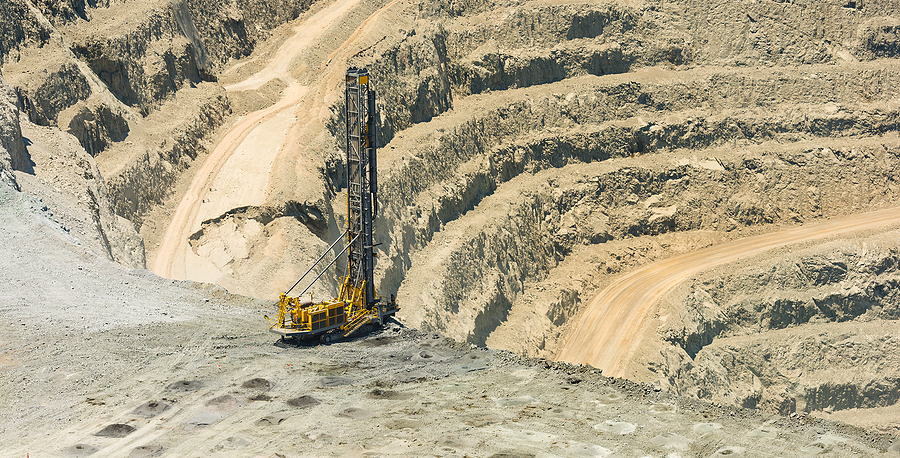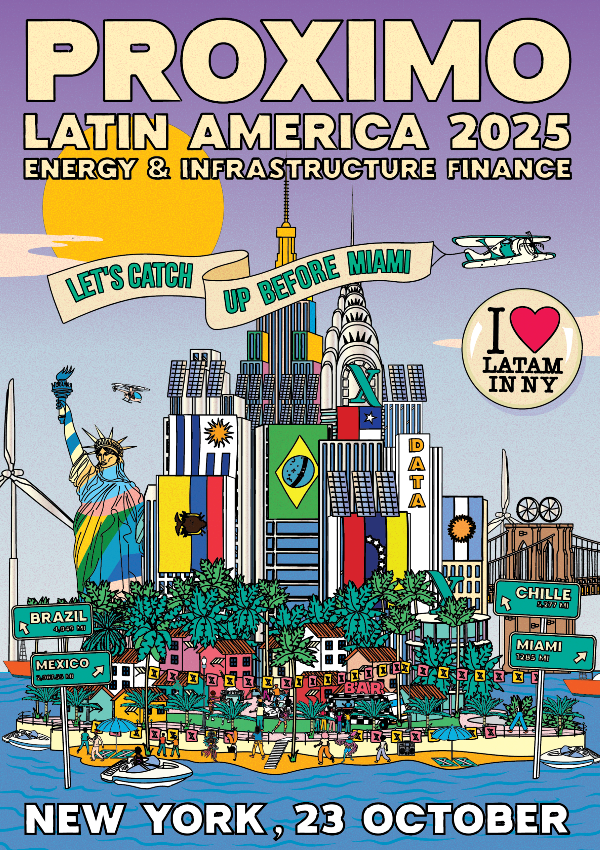Proximo Weekly: Chile's changing pit politics
How is the drafting of Chile’s new constitution affecting mining investor and lender sentiment? It’s not a disaster, but the lack of a dedicated mining statute will make long-term final investment decisions more difficult.

As part of the process of drafting a new Chilean constitution, which will be put to a referendum on 4 September 2022, new proposals concerning mining privatisation were put before the Constitutional Convention for a vote on 7 May 2022. Presented by a committee of young ecological activists elected in the wake of the 2019 protests, the proposals fell short of the number necessary to pass them. But the vote itself was a wake-up call for investors, developers and lenders to Chile’s big-ticket mining sector.
Boasting 28% of global copper production, Chile is the largest copper producer in the world as well as being the world's second largest producer of lithium, claiming 22% of world production. According to Proximo Data, since 2019 there has been $6.2 billion of project financings across eight mining deals in Chile, with five in the last year alone. Consequently, any change in mining regulation, potential or enacted, will be of concern to lenders.
Constitutional changes
Article 27, which did not meet the two-thirds threshold of votes on the convention floor, proposed to make the state the majority shareholder in any copper mines as well as granting the state exclusive rights to lithium, rare earth metals and hydrocarbons. Such extreme measures were always unlikely to pass given that they would catalyse international legal battles and put at risk a nearly $70 billion project pipeline.
Other individual articles that fell short included those limiting private capital in copper to ventures that are majority owned by the state and replacing investor-friendly concessions with temporary permits.
However, Article 25, which proposes that miners must assign resources to repair damage to the environment, achieved a supermajority and will feature in the draft constitution. A broad article declaring minerals the domain of the state was also approved, as were new rules on water rights and a greater protection of so-called ‘natural spaces’.
The plenary has also approved a ban on mining in glaciers, but rejected similar proposals for salt flats, wetlands, permafrost areas and the ocean floor.
Expectations across the market concurred that the nationalisation of mining assets was very unlikely to ultimately be included in the new constitution. However, as Rodrigo Delaveau, Head of Public Law at Chilean law firm Morales & Besa, explains, “we are yet to see what the result for proposed transitory provision will be towards mining concessions, royalties, and other ideas, including nationalisation.”
With simplicity comes uncertainty
The vote has excluded initially foreseen risks such as the threat of imminent nationalisation and temporary permits, but now the industry is subject to very simple laws and therefore, to contingent political majorities.
While the current constitution has a dedicated mining statute, the vote on the 7th May means the new draft constitution lacks one.
The dedicated section in the current, soon to be old, constitution regarding mining was introduced in 1980 to regain the trust of foreign investors following the nationalisation of foreign mining companies in the early 70s without compensation. The provisions include due compensation in the case of nationalisation, judicial adjudication of exploration rights and that all mining substances are subject to concession as a general rule (not as an exception).
The provision of due compensation in the case of nationalisation has been changed from “property harm actually caused” as set forth in the current constitution, to “fair price” in the proposed constitution, a much more discretional concept.
Taken away from the constitutional text and ‘downgraded’ to an ordinary statute, the concern is that there will be nothing to insulate the mining industry from the political process and subsequently undergoing substantial changes as and when new governments are elected.
Mining companies are warning that the constitutional convention failed to deliver the legal certainties needed for long term investments crucial to supplying the clean-energy transition.
Demand for copper has been under pressure in the last 12-18 months, Chile has the biggest deposits of the wiring metal used to electrify economies and as such there is more incentive to increase production. In response to this demand Chilean copper production is expected to grow by almost 1,000kt between 2021 and 2026. Around 30 projects are expected to commence operations between 2022 and 2026, 10 of which are already under construction. New mines including, Esperanza Sur Pit, Quebrada Blanca Phase 2 and the Los Pelambres expansion project are coming online this year, which will boost production.
There has been significant deal flow in the space, particularly in expansion projects. One example is the Mantoverde Copper Mine which secured a $571.6 million ECA-backed buyer credit/bond project financing in February 2021. The complex loan consisted of a $250 million Finnvera-covered loan, a $60 million direct loan from Export Finance Australia and a $51 million bonding facility to fund the expansion of existing oxide pits, tailing storage facility and desalination plant.
No dedicated mining statute
However, the lack of a dedicated mining statute has raised questions about taxes, royalties and where to set the tax level. A new royalty bill that will levy a 1% tax on gross sales for projects producing less than 200kt copper per year, between 1% and 3% for others and a 3% sales tax for lithium, has provisionally passed the Senate Commission earlier this year but is subject to revisions.
The tax situation remains unclear but when copper prices are high, as they are currently, it is expected that taxes and royalties will increase. David Derrez, Head of Metals and Mining Latin America at Natixis confirms the wider industry expectation: “Royalties increasing with the price of copper will happen one way or another, although probably not on the level discussed today.”
There is concern that the Chilean government underestimates the necessity of a stable tax and royalties’ program to provide comfort to investors in such a capex intensive industry. Take the needs of Chilean state-owned copper mining company Codelco, which has an investment program of $10 billion over the next couple of years. Codelco has started seeking prospect partnerships for 34 projects across the country, its first such move into joint exploration. The company has said that applicants must be able to attract capital, but international investors will likely need the security of a stable tax program to commit such large amounts of capital.
Derrez says “the main impact we’ve seen in the industry now is that at a time where there is a need for investment in the sector, for new mines to come on stream, to meet the supply needs for the energy transition, we see a lot of investors having a more 'wait and see' attitude, rather than going full speed ahead investing in new assets, there’s a definite hesitancy. People are being careful of investments given the volatility in the tax situation.”
Indirect provisions
There is also a case for certain indirect provisions affecting the mining industry. Specifically, there is now, as drafted in the new constitution, a different way of subdividing land. There are still regions and communes but now there is the addition of special territories and special indigenous territories.
These territories and the conditions of defining a territory are yet to be determined, but what is clear is that these special territories would be completely autonomous and have their own legislative and judicial system. As Delaveau explains: “These special territories, which are yet to be defined by statute, would have veto power for different activities. Different economic activities such as mining, energy, electricity, and anything that has a presence across vast areas, would have to contend with a different regulatory system and judicial system. So that could trigger another set of problems in terms of permits and taxes.”
It seems the mining industry, like the energy and electricity industries are facing a myriad of ‘what ifs?’ in relation to special territories.
Opportunities in ESG?
The impact of ESG on the Chilean mining market is growing. There is increased pressure on the way mines are being run which means there are more consultations with communities. Projects are taking longer to come online as a result of these consultations, which focus predominantly on social factors and reducing carbon emissions.
One recent example would be Anglo American’s announcement earlier this month that the Environmental Assessment Service (SEA) of Chile had formally rejected the company’s application for a $3 billion expansion of its flagship Los Bronces copper mine. The SEA denied the permit due to lack of sufficient information on the potential risk to public health.
Copper producers may favour investor sentiment given that it is the primary metal needed to make batteries for EV vehicles and other energy transition assets, but it still takes a huge amount of carbon emissions to produce.
Many producers have made commitments to be as carbon neutral as possible by 2050 and action around these commitments is gathering pace. Introducing EV mining fleets is a primary focus. Lithium producer SQM announced the largest electric fleet of transport vehicles in the Chilean mining industry in April 2022. Consisting of 34 vehicles, the fleet includes Chile’s first high-tonnage electric truck.
While there are investment opportunities around building out the mining infrastructure through a carbon conscious lens, green financing is still yet to take off in the Chilean mining industry. Most mines are not eligible for green financing, but a growing trend of renewable desalination could see a growth in green financings.
There are 15 projects on file for desalination plants and/or seawater impulsion systems (direct use of non-desalinated seawater), which will come into operation in Chile by 2028, with several of these planned to be powered by renewable energy. Derrez says “green financing is in every discussion we’re having, although we haven’t yet seen a single one in the mining industry in Chile.”
However, what is becoming increasingly more popular as a type of ESG debt is KPI-linked bonds (where KPIs are key performance indicators related to sustainability). The mining company makes a couple of sustainability commitments and selects, with lenders, a couple of KPIs. These KPIs will be matched through the life of the credit to achieve a benefit from a pricing standpoint. Several players in Chile are already doing these kinds of financings and they are likely to grow in popularity as mining companies, international banks and ECAs are all prioritising ESG focused investment.
The Proximo perspective
The sustained demand for copper and lithium in light of the energy transition, coupled with the globally unmatched contribution of mining to the Chilean GDP, will undoubtedly see the market continue to expand.
But this latest vote has left the industry exposed to new rules passed in Congress. Mining companies will likely continue to lobby for a more defined mining statute and tax/royalties program in order to cement their future and re-assure international investors going forward.
With such a progressive and ecologically focused government, the resolution of constitution uncertainties will likely see the prioritising of ESG factors and subsequently the timeline for green financing in the Chilean mining industry could be fast-tracked.
Selected news articles from Proximo last week
NORTH AMERICA
AES, Clearway, Cypress Creek and DESRI team up for US solar supply chain initiative
Having been hit hard recently by structural problems in the US solar market, AES, Clearway, Cypress Creek Renewables and D. E. Shaw Renewable Investments (DESRI), have formed the US Solar Buyer Consortium to support expansion of the domestic solar supply chain which is fledgling at best: according to Wood Mackenzie the US currently has just 7.5GWs of PV module production out of a global capacity of nearly 400GW.
EUROPE
Turkey awards 850MW in YEKA wind tender
Turkey’s Ministry of Energy and Natural Resources has awarded 850MW of wind capacity to 20 projects in the latest round of the country’s Renewable Energy Resources Zone (YEKA) tender programme.
ASIA-PACIFIC
Japanese companies consider joining Santos CCS project
JERA, Tokyo Gas and Inpex are planning to join the proposed carbon capture and storage (CCS) project led by Santos (STO) at Bayu Undan offshore East Timor.
MIDDLE EAST & AFRICA
Engie and Acciona put in cheapest offers for Mirfa 2
Of the two capacity proposals (80 MIGD and 120 MIGD respectively) called for by EWEC in the tender for the Mirfa 2 reverse osmosis project in Abu Dhabi.
SOUTH AMERICA
Magdalena River PPP fails to attract bidders
Colombia's National Infrastructure Agency (ANI) has failed to attract any bidders for the Magdalena River PPP project and has consequently voided the solicitation.
The Proximo Membership
Join a brand new community of project finance professionals getting unrivalled access to unique analysis, market data and a global portfolio of expert industry events in the energy and infrastructure space. Click here to find out more





